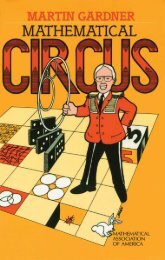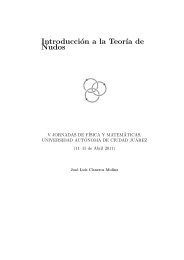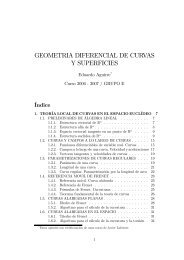Tao_T.-Analysis_I_(Volume_1)__-Hindustan_Book_Agency(2006)
Tao_T.-Analysis_I_(Volume_1)__-Hindustan_Book_Agency(2006)
Tao_T.-Analysis_I_(Volume_1)__-Hindustan_Book_Agency(2006)
Create successful ePaper yourself
Turn your PDF publications into a flip-book with our unique Google optimized e-Paper software.
2<br />
1. Introduction<br />
1. What is a real number? Is there a largest real number?<br />
After o; what is the "next" real number (i.e., what is the<br />
smallest positive real number)? Can you cut a real number<br />
into pieces infinitely many times? Why does a number such<br />
as 2 have a square root, while a number such as -2 does<br />
not? If there are infinitely many reals and infinitely many<br />
rationals, how come there are "more" real numbers than<br />
rational numbers?<br />
2. How do you take the limit of a sequence of real numbers?<br />
Which sequences have limits and which ones don't? If you<br />
can stop a sequence from escaping to infinity, does this mean<br />
that it must eventually settle down and converge? Can you<br />
add infinitely many real numbers together and still get a<br />
finite real number? Can you add infinitely many rational<br />
numbers together and end up with a non-rational number?<br />
If you rearrange the elements of an infinite sum, is the sum<br />
still the same?<br />
3. What is a function? What does it mean for a function to be<br />
continuous? differentiable? integrable? bounded? can you<br />
add infinitely many functions together? What about taking<br />
limits of sequences of functions? Can you differentiate an<br />
infinite series of functions? What about integrating? If a<br />
function f(x) takes the value 3 when x = 0 and 5 when<br />
x = 1 (i.e., f(O) = 3 and f(1) = 5), does it have to take every<br />
intermediate value between 3 and 5 when x goes between 0<br />
and 1? Why?<br />
You may already know how to answer some of these questions<br />
from your calculus classes, but most likely these sorts of issues<br />
were only of secondary importance to those courses; the emphasis<br />
was on getting you to perform computations, such as computing<br />
the integral of xsin(x 2 ) from x = 0 to x = 1. But now that you<br />
are comfortable with these objects and already know how to do all<br />
the computations, we will go back to the theory and try to really<br />
understand what is going on.











